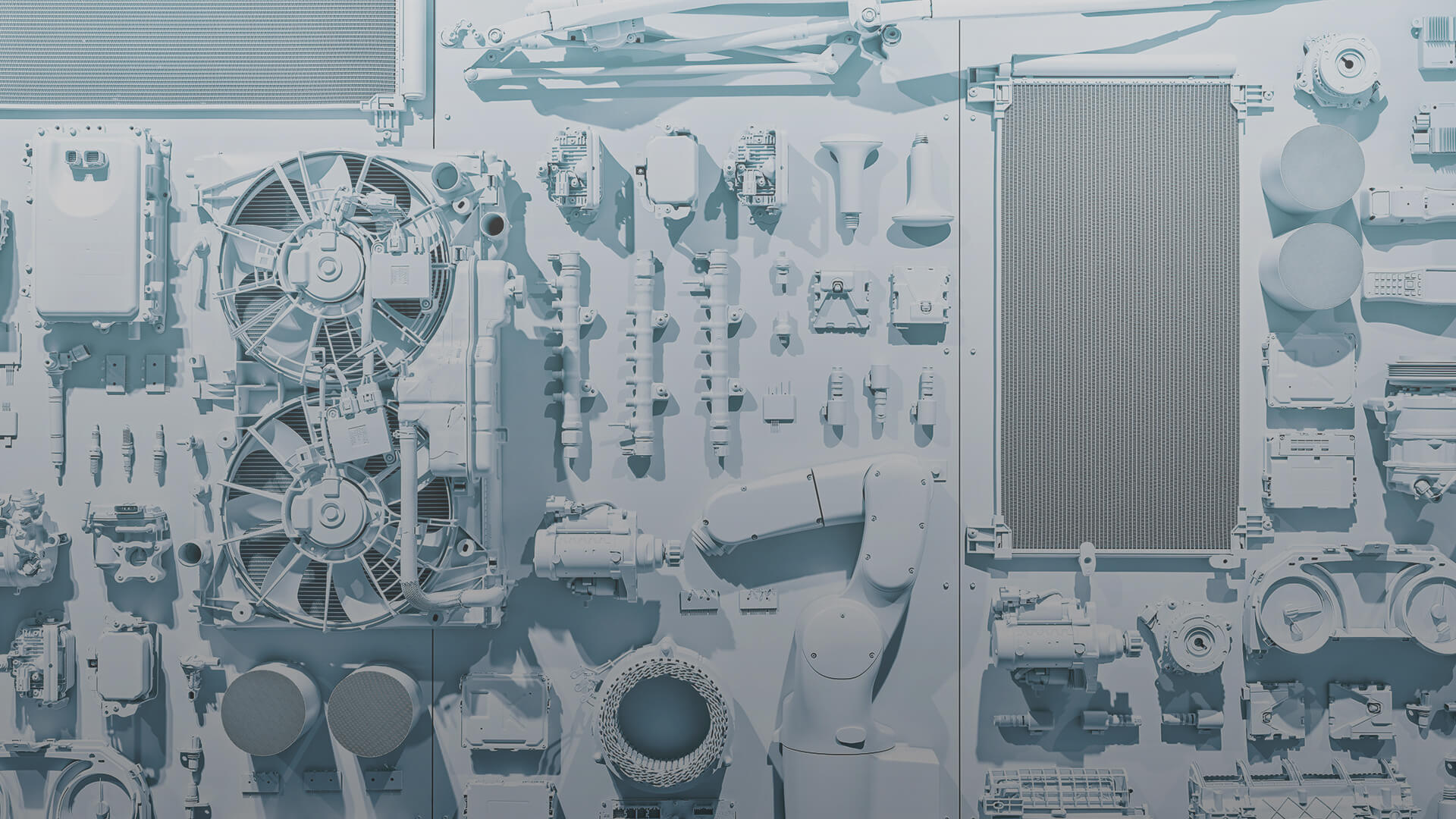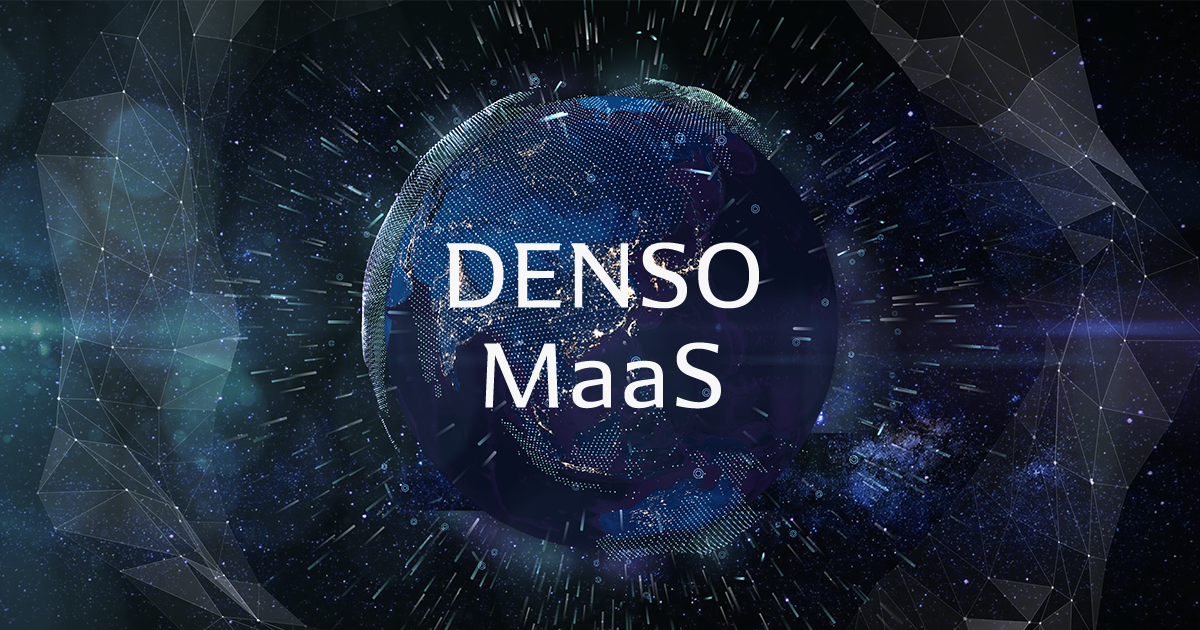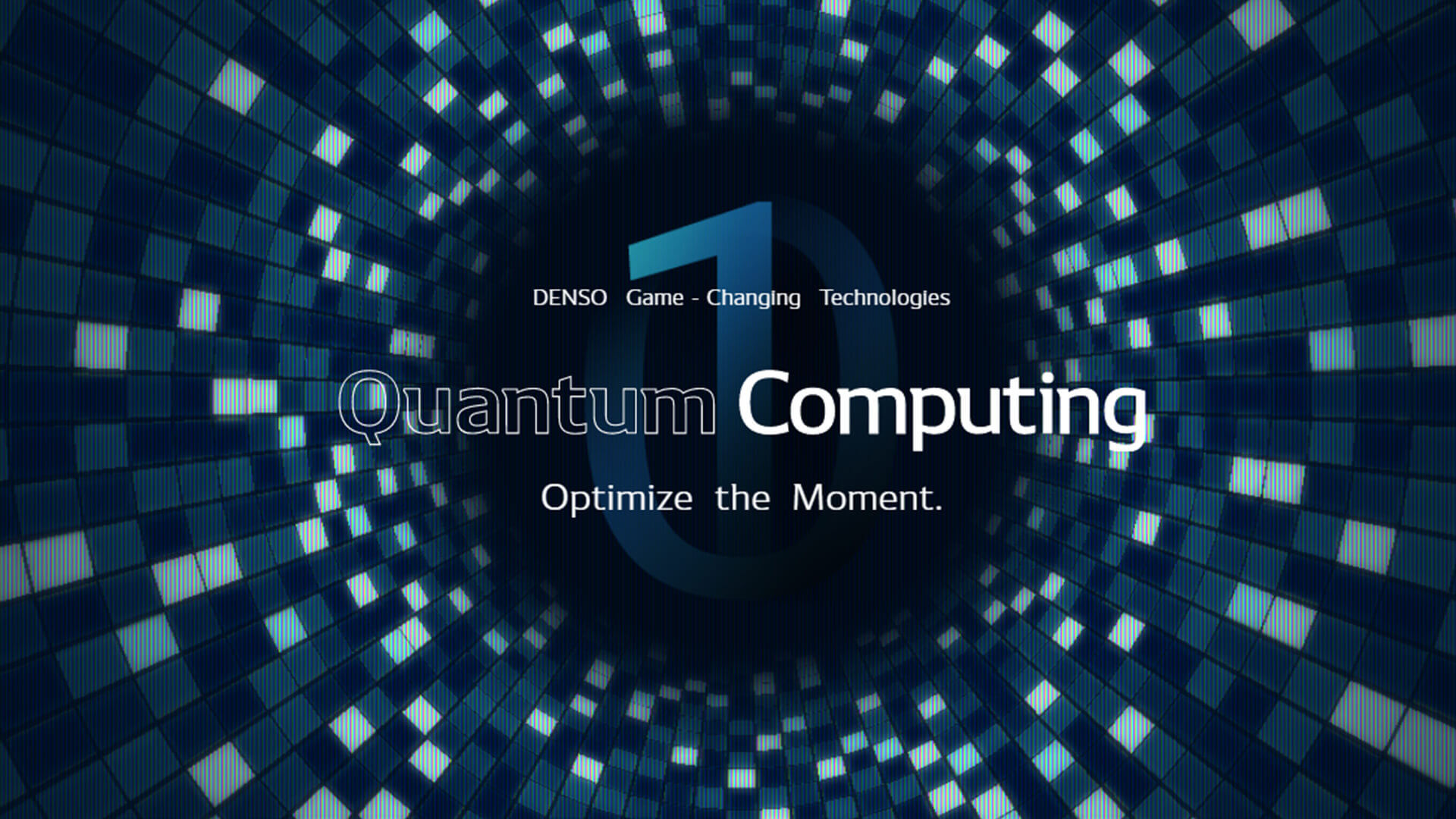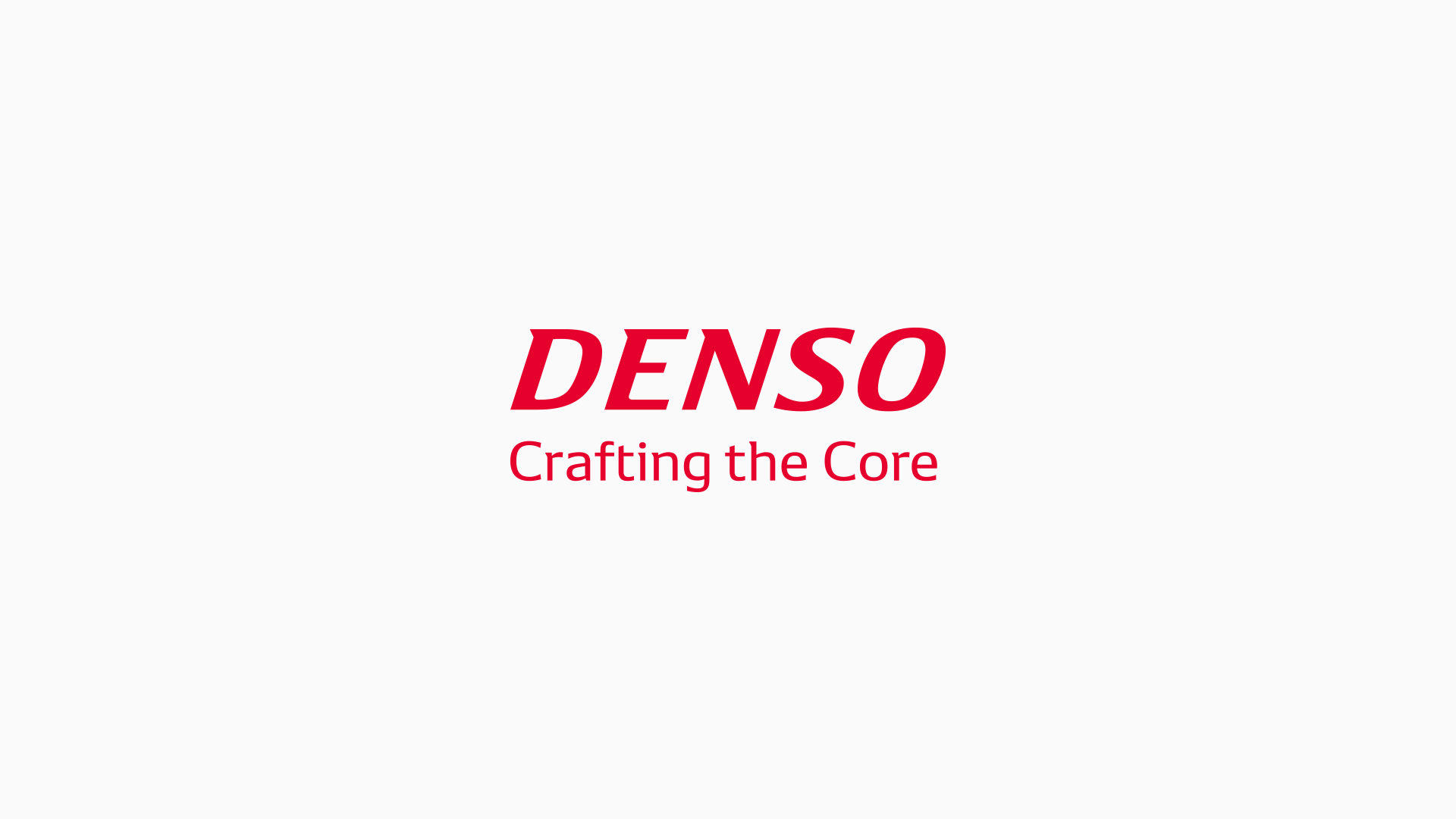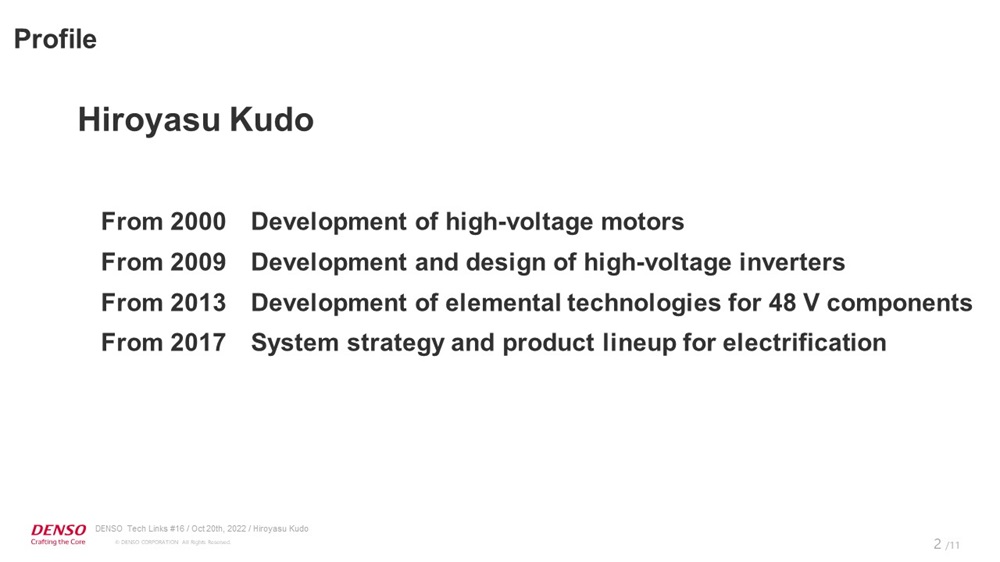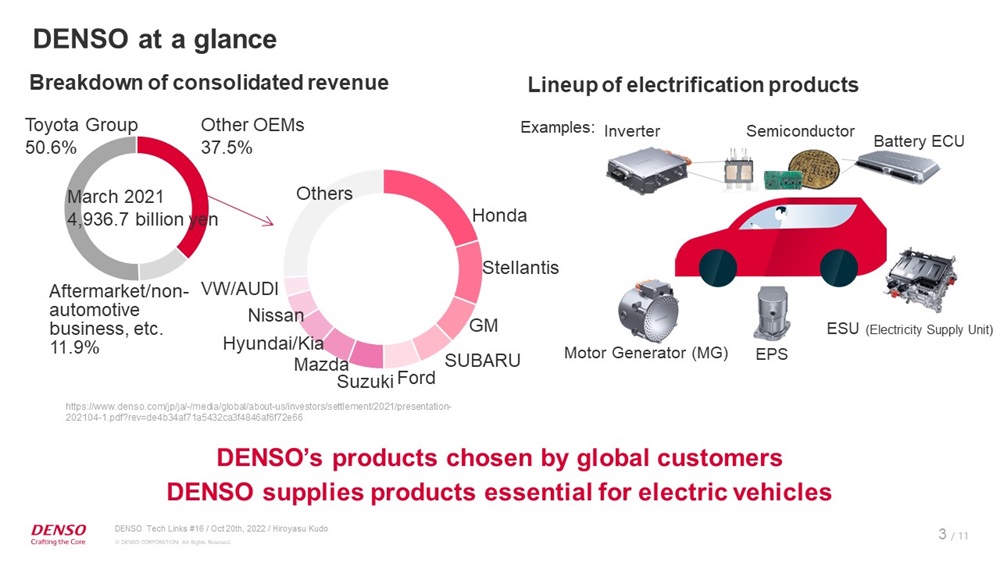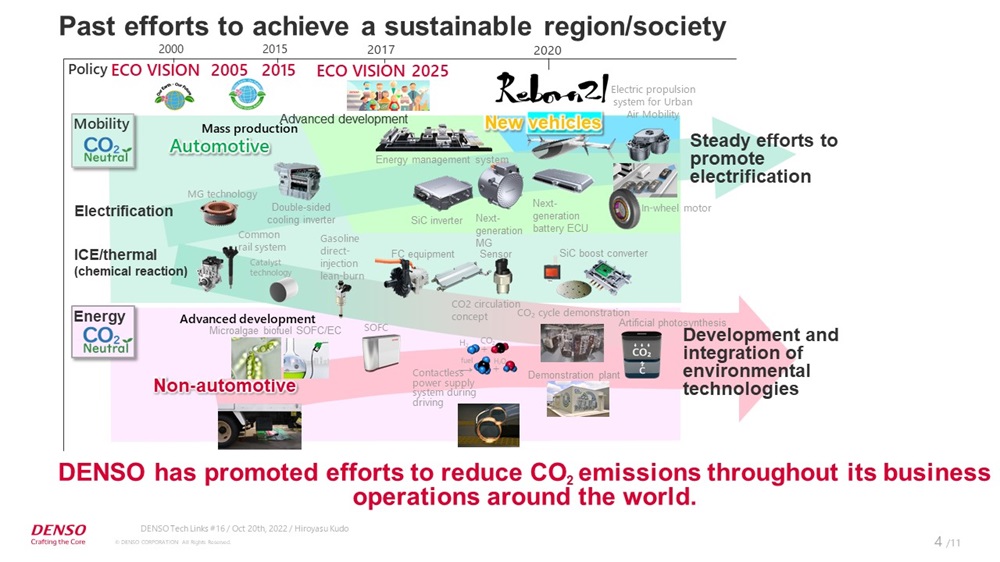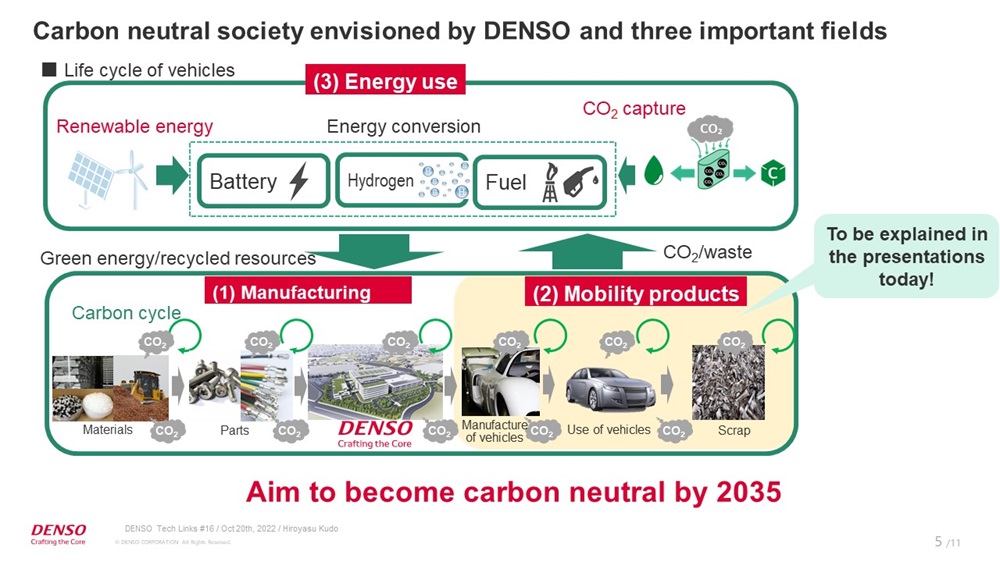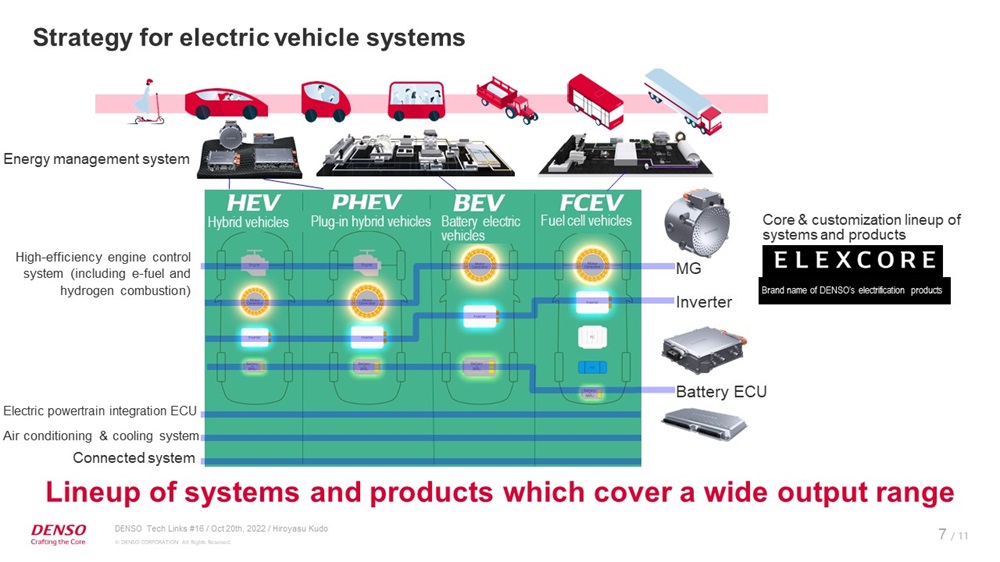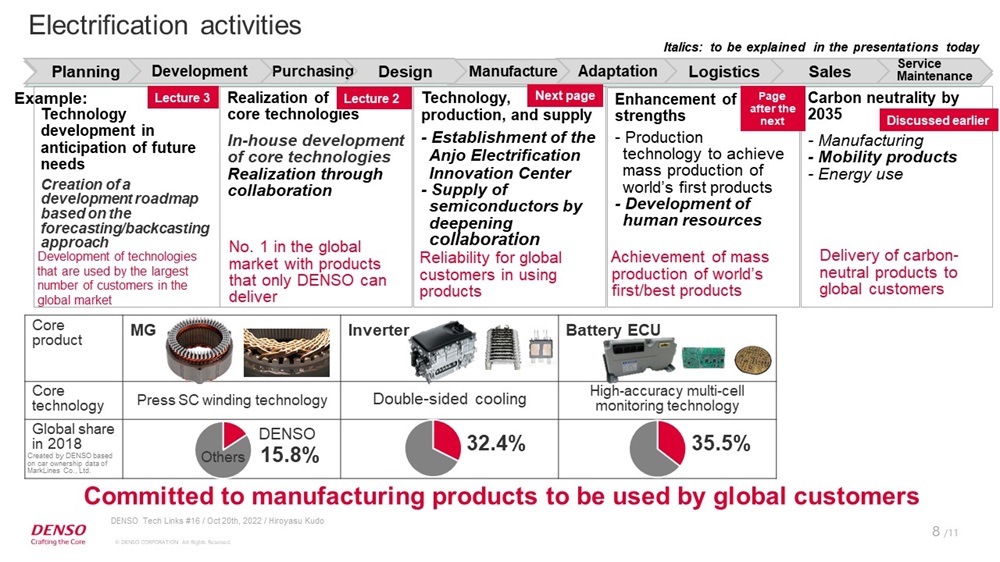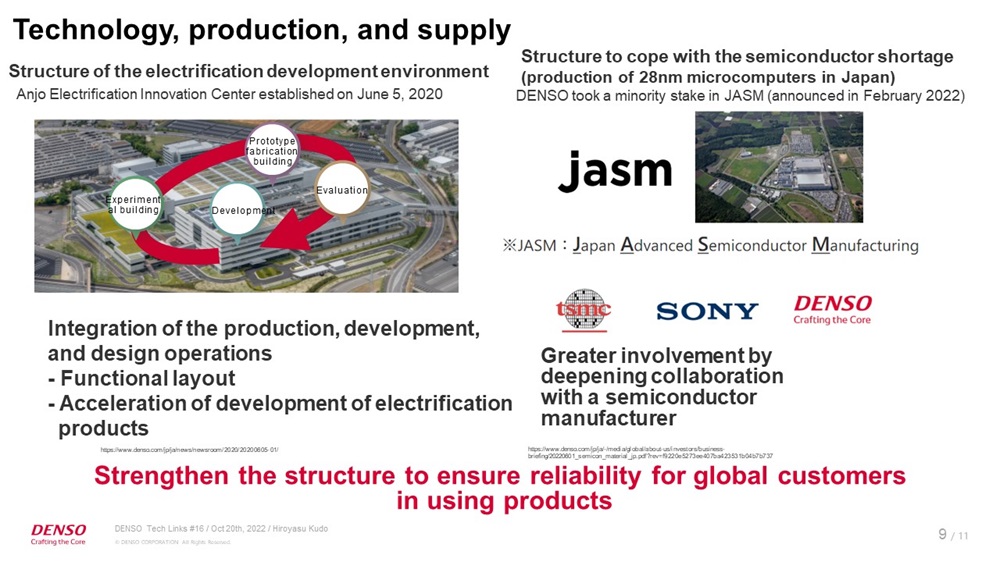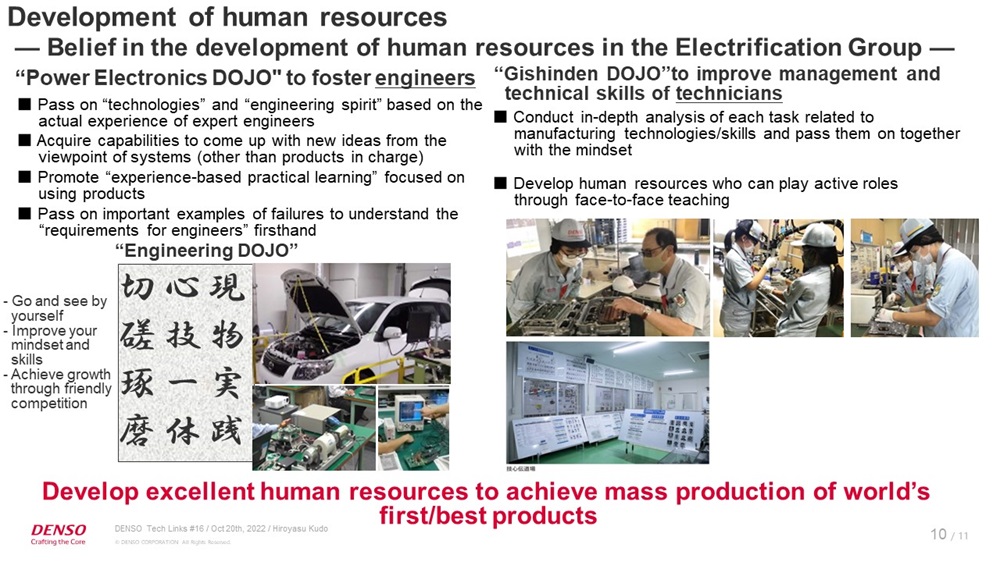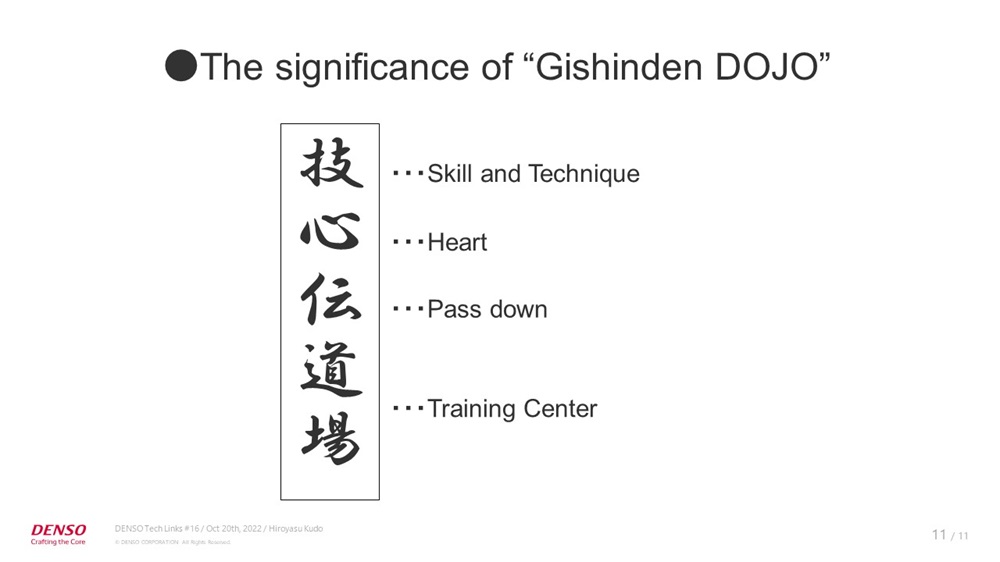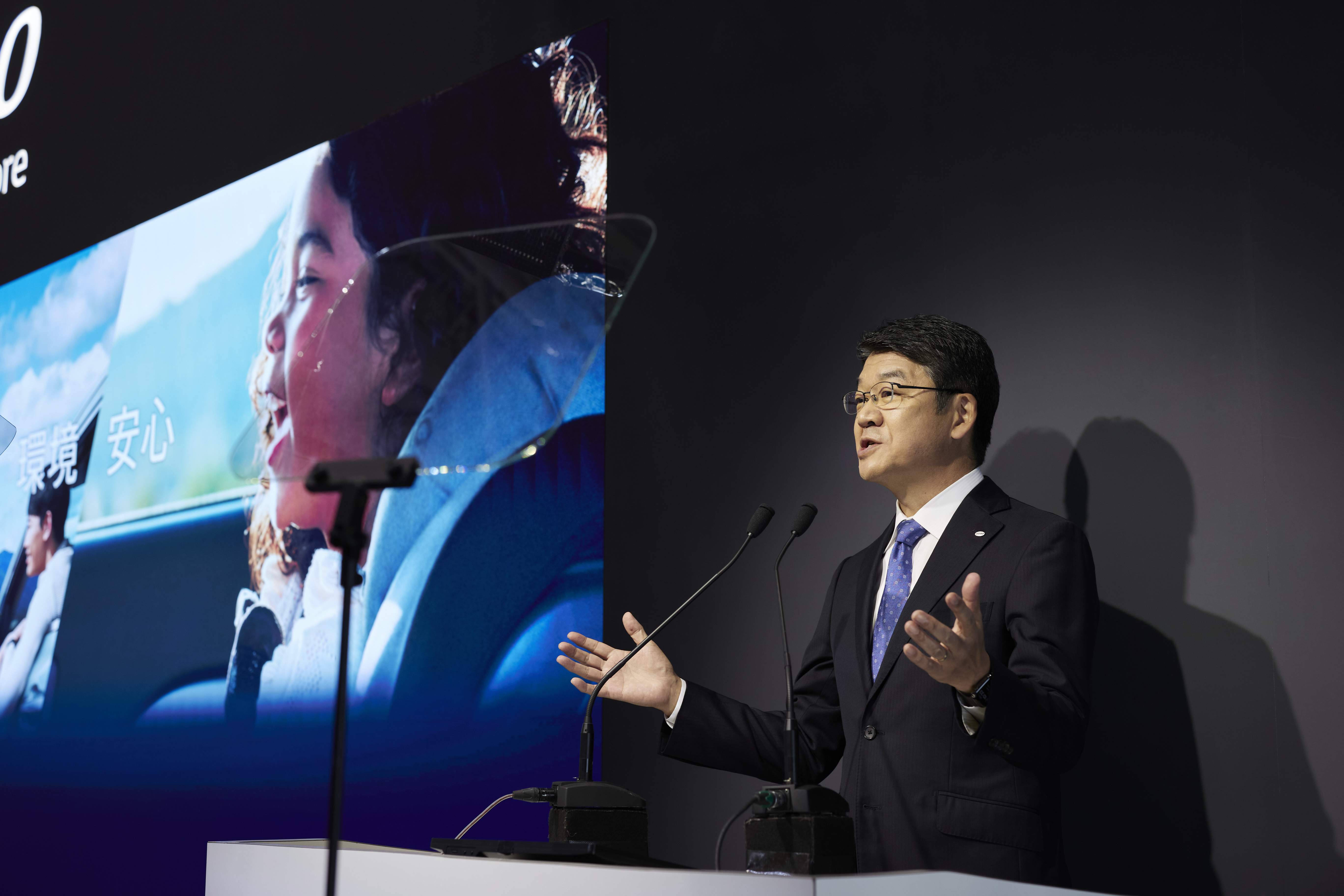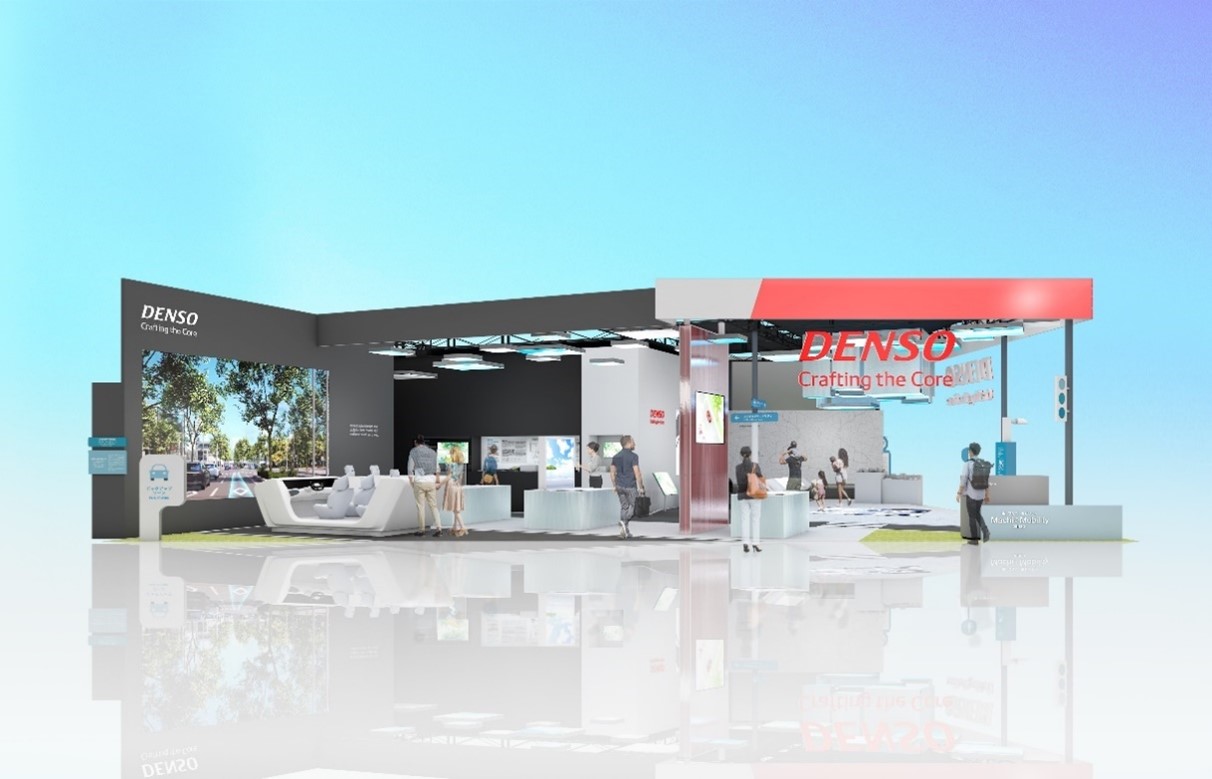Aiming to Deliver Products Used by the Largest Number of Customers in the World through Technology Development in Anticipation of Future Needs — DENSO’s electrification efforts to realize carbon neutrality
DENSO Tech Links #16 focused on the theme of “Automotive components change the future of vehicle electrification!” and discussed the electrification of vehicles from DENSO’s unique perspective as an automotive components supplier. Hiroyasu Kudo of the Business Strategy Dept., Electrification Energy Management Business Group took the podium to outline the company’s electrification efforts as well as its past progress.
【Speaker】
Hiroyasu Kudo
Business Strategy Dept.
Energy Management Group
DENSO Corporation
Introduction
Today, I would like to give an overview of DENSO’s electrification efforts.
Let me introduce myself briefly. I joined DENSO in 2000 and was assigned to the development of high-voltage motors. I then worked on developing and designing high-voltage inverters for auxiliary equipment systems. Later, I developed elemental technologies for 48 V components. Currently, I am responsible for the system strategy and product lineup.
Next, I’ll give an overview of DENSO. The left side of the slide shows the breakdown of consolidated revenue. Take a look at the companies in “Other OEMs,” and you will see that DENSO products are chosen by various customers.
Let’s take a closer look at electrification. DENSO supplies inverters, which electric vehicles use to drive, turn, and stop; battery ECUs, which monitor the status of batteries; and semiconductors, motor generators (MGs), and EPSs, which underpin electrification systems.
DENSO’s Efforts to Reduce CO2 Emissions
This slide shows DENSO’s efforts in the past and into the future on reducing CO2 emissions. DENSO has implemented measures with future requirements in mind by formulating environmental policies called “ECO VISION.”
In terms of mobility, DENSO supplies motor generators and inverters to customers. We are also proposing the electrification of flying because aircraft are expected to be increasingly electrified.
Different forms of electrification solutions, such as in-wheel motors, will be required for vehicles.
In addition to mobility, DENSO is also involved on the energy front. For example, it is developing biofuels and has been participating in field operational tests and experiments for wireless charging since the early stages.
More recently, field operational tests and experiments have been conducted to capture CO2 and generate electricity, which is used to power battery electric vehicles (BEVs). DENSO is committed to reducing CO2 emissions.
The term “carbon neutrality” is now widely used. DENSO is working to reduce CO2 emissions in three main areas: 1) manufacturing, 2) mobility products, and 3) energy use.
DENSO aims to realize carbon neutrality by 2035. Today, I will focus on mobility products.
Basic Strategy for Mobility Products Aiming to Realize Carbon Neutrality
This slide shows the basic strategy. Hybrid electric vehicles (HEVs) were the first vehicles marketed with an electrification system. Electrification will spread to BEVs, fuel cell electric vehicles (FCEVs), and electric propulsion-powered aircraft. DENSO has developed components required for these vehicles in line with the spread of electrification.
The strategy encompasses various possibilities, including the evolution of “fun to drive,” application of electrification to flying, increased freedom of mobility, and increased fuel options, such as e-Fuel (synthetic fuel) and hydrogen. Our basic policy is to develop technologies in anticipation of diverse future needs.
This slide focuses on electric vehicles. Various vehicles will be electrified, including passenger cars, motorcycles, agriculture and construction machinery, and trucks.
MGs, inverters, and battery ECUs are required for all types of electric vehicles, including HEVs, plug-in hybrid electric vehicles (PHEVs), BEVs, and FCEVs.
These components are used for various applications in diverse environments, so the scope of development is determined in line with such differences. DENSO is committed to developing required technologies as “core technologies.”
Electrification Activities
This slide shows the details of DENSO’s electrification activities. There are various processes involved in market products, including planning and development of products, purchasing of parts, as well as design and manufacture. The activities on the slide are some examples.
In planning and developing products, top priority is placed on developing technologies in anticipation of future needs to deliver systems which will be used by many customers in the future. At DENSO, the term “forecasting/backcasting approach” is used to describe this concept.
This approach underpins DENSO’s planning and development of products and technologies which will be used by the largest number of customers in the world. Examples will be presented in Lecture 3.
Technologies are developed based on a roadmap. DENSO is committed to developing core technologies in-house, and the collaboration of employees in various fields, such as engineering and design, including thermal and vibration design, gives us an advantage.
This is how DENSO has developed, and will continue to develop, its proprietary products. DENSO focuses its resources on technology, production, and supply so that customers can use our core technologies reliably and stably.
In terms of development, DENSO has established an innovation center at the Anjo Plant to build a system for constantly improving its development capabilities.
DENSO has also taken action in response to the recent semiconductor shortage. It has made arrangements to ensure stable supplies by working more closely with semiconductor manufacturers and suppliers. In product development, staff skills matter most.
Thus, DENSO is committed to developing human resources to mass-produce the world’s best products. Products developed by DENSO employees are contributing to carbon neutrality. That is, the energy used for vehicles and in the manufacturing process is carbon neutral.
These activities have led to the development of core technologies and products, which have been used by global customers.
The products and technologies indicated on the slide may change in the future, but DENSO will do its utmost to enable its products and technologies to be used by many customers.
Let me explain the structure of the electrification development environment. In June 2020, DENSO opened the Electrification Innovation Center at the Anjo Plant to speed up development by undertaking the entire process from development to evaluation and prototyping.
Regarding coping with the semiconductor shortage, DENSO took a minority stake in JASM to develop 28nm microcomputers. DENSO has been working to ensure stable supplies by sharing its future vehicle production plan with semiconductor manufacturers and taking more specific actions than before.
DENSO’s continuous investment in these fields demonstrates its commitment to electrification.
“Power Electronics DOJO” and “Gishinden DOJO”
Finally, I will explain DENSO’s efforts to develop human resources. DENSO organizes the “Power Electronics DOJO” to train engineers and the “Gishinden DOJO” to improve the management and technical skills of technicians.
The Power Electronics DOJO aims to pass on technologies, spirit, and mindset from expert engineers. Lectures are given from the viewpoint of systems so that engineers can understand the design concept behind the products they are involved in. It is important to use products, so top priority is placed on experience-based learning. Trainees can understand the requirements for engineers firsthand while sharing past failures. The spirit of the dojo is to “go and see by yourself,” “improve your mindset and skills,” and “achieve growth through friendly competition.”
The Gishinden DOJO aims to conduct in-depth analysis of manufacturing technologies and skills. It passes on technologies and skills together with the mindset and “develops human resources who can play active roles”. This is how DENSO develops human resources who can mass-produce the world’s best products.
The Power Electronics DOJO is a dojo under the jurisdiction of the electrification systems business group, and the Engineering DOJO is a collective organization of multiple dojos at the company level, including other business groups.
On a final note, DENSO carries out R&D to help make the sky clear by using its electrification technologies, and to contribute to a society where people can live with peace of mind.







